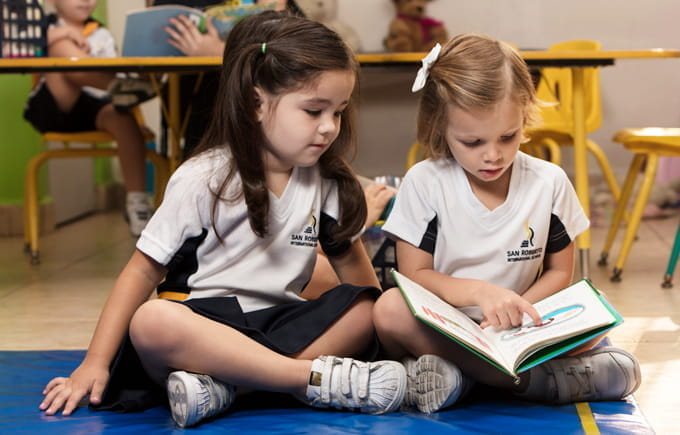We use cookies to improve your online experiences. To learn more and choose your cookies options, please refer to our cookie policy.

Balanced literacy focuses on the development of each student’s abilities in reading, writing, speaking, and listening. Instruction is based on the assessment of the learning needs of each student.
Our teachers guide students toward independence in their skills as readers and writers using high-quality experiences with texts, rather than lower-level activities such as worksheet drills. The heart of our instruction is “real life” literacy experience. This approach fosters a community of learners who are intrinsically engaged in developing their literacy craft.
In a balanced literacy framework, students engage in a variety of literacy activities, known as The Daily Five. Students learn to work independently, to make discoveries and choices, and to be responsible for their own learning.
Language Arts instruction in a balanced literacy classroom can best be described as a workshop, not unlike an artist’s studio, in which the craft of literacy is developed.
At San Roberto International School, students benefit from this program in both English and Spanish.
Daily Read Alouds
Reading aloud is a critical component of balanced literacy. Teachers model comprehension strategies and promote understanding of elements of plot, character development, inference, gaining competencies with informational text, and more.
Shared Reading and Writing
Teacher and students read or write selections together, working on vocabulary, fluency, comprehension, and language acquisition strategies. Selections are slightly more difficult than the group's average independent reading or writing level.
Guided Reading and Individual Student Conferences
Individual levels, needs, and strengths are analyzed and addressed accordingly. Flexible groupings of students are based on teaching goals. Specific instructional strategies support student learning with the use of leveled books from the Book Room at school. Strategies are designed to move students from dependent to independent readers and writers.
Independent Reading and Writing
Students participate in individual writing activities each day. Reader´s Notebook strategies for reading and writing are used. Teachers hold individual conferences with each student. Students are exposed to a variety of genres, topics, and levels. “Reading for Meaning” and “Reading is Thinking” practice.
Working with Words
Students explore and manipulate key vocabulary, phonetic groups, and spelling patterns through direct instruction with teachers. This is followed by independent practice with word-sort activities and games. During many daily reading and writing experiences, children are taught about letters, sounds, and words and how they work.
Preschool
Teachers help students build independent reading and writing habits so that they know how to actively engage in the five meaningful literacy tasks that we refer to as The Daily Five. In preschool, students engage in these five activities at an introductory level: reading to themselves, reading with a partner, listening to reading (books on tape or CD), writing, and working with words (spelling, phonics, vocabulary). Students are constantly exposed to language experiences such as read-alouds in both English and Spanish. This is a wonderful opportunity for children to get familiar with books and authors as well.
Elementary
Teachers engage students in interactive read-alouds and shared reading and writing. The teacher also conducts guided reading groups and individual student conferences. During this time the students participate in The Daily Five activities and whole group, small group, and individual instruction is differentiated and based on determined needs.
Middle School
Language arts classes have a common reading/writing workshop structure, which generally includes a whole group mini-lesson followed by time for independent work and closing with a whole group sharing about the day’s learning. During independent work time, the teacher conducts individual and small group conferences that are differentiated according to student needs. At times other activities are used, such as readers' theater, debate, oral presentations and multi-media.